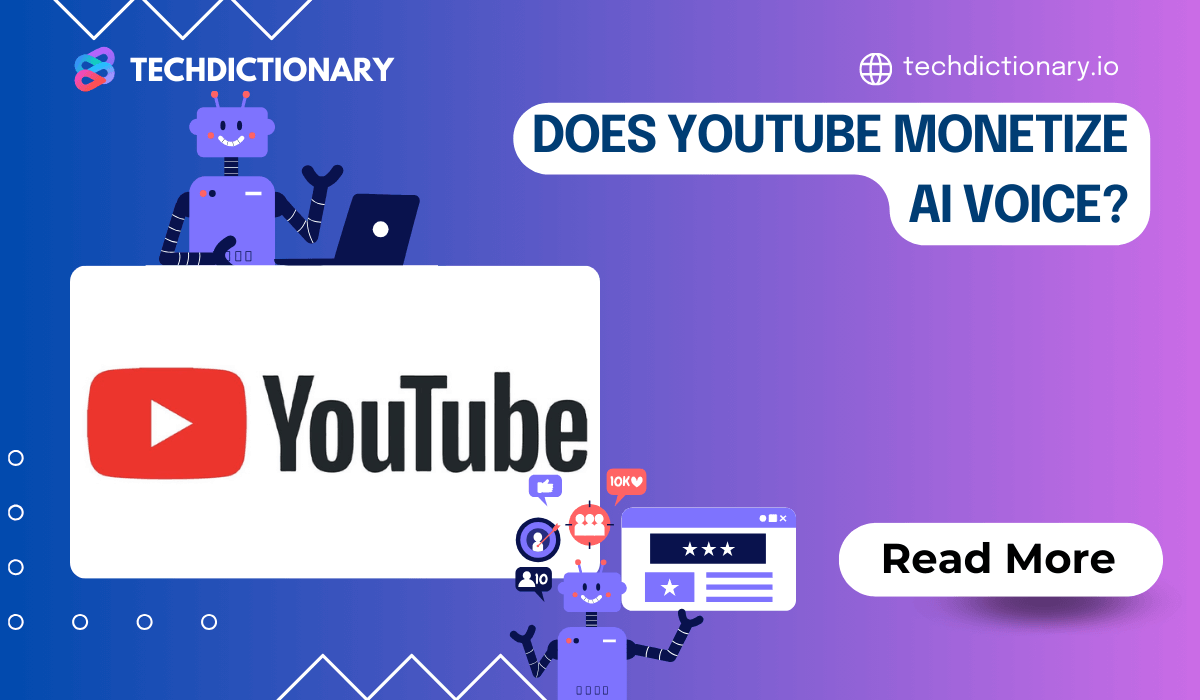
Artificial Intelligence (AI) is transforming the world of content creation. Evidence is that creators are learning to apply AI resources to their content journey across various platforms, including YouTube. In this article, we’ll discuss one intriguing technology: AI-generated voiceovers. While you can use this tool to create compelling, valuable videos to upload on YouTube, a crucial question remains: Does YouTube monetize AI voice?
You’ll find out the answer in the section below. As you scroll further, we’ll show you all things necessary to effectively use AI voiceovers on this second most visited platform.
The good news for aspiring YouTubers is that, yes, in 2025, YouTube still does monetize AI voice! Of course, it’s valid as long as you adhere to YouTube’s overall monetization policies.
In 2023, there was a rapid increase in the number of AI-generated channels on YouTube. The platform then seemingly demonetized these channels, including those relying solely on AI voices. But in 2025, we spotted a group of channels surviving after that large-scale scan. What’s the magic?
Well, while YouTube discourages low-effort, auto-generated content, it still leaves room for high-quality, natural-sounding AI voices combined with unique content. Following this standard helped those channels stay in the “monetization” mode till today.
In short, AI voiceover can be a helpful tool, but you need to focus on the importance of creating high-quality, unique content as well as following YouTube guidelines to succeed on this platform.
You can combine AI voiceovers and YouTube monetization to create a profitable channel. But there are rules to follow. Here are some key pillars of the YouTube Partner Program (YPP) – where you need to join to facilitate earning money from your videos:
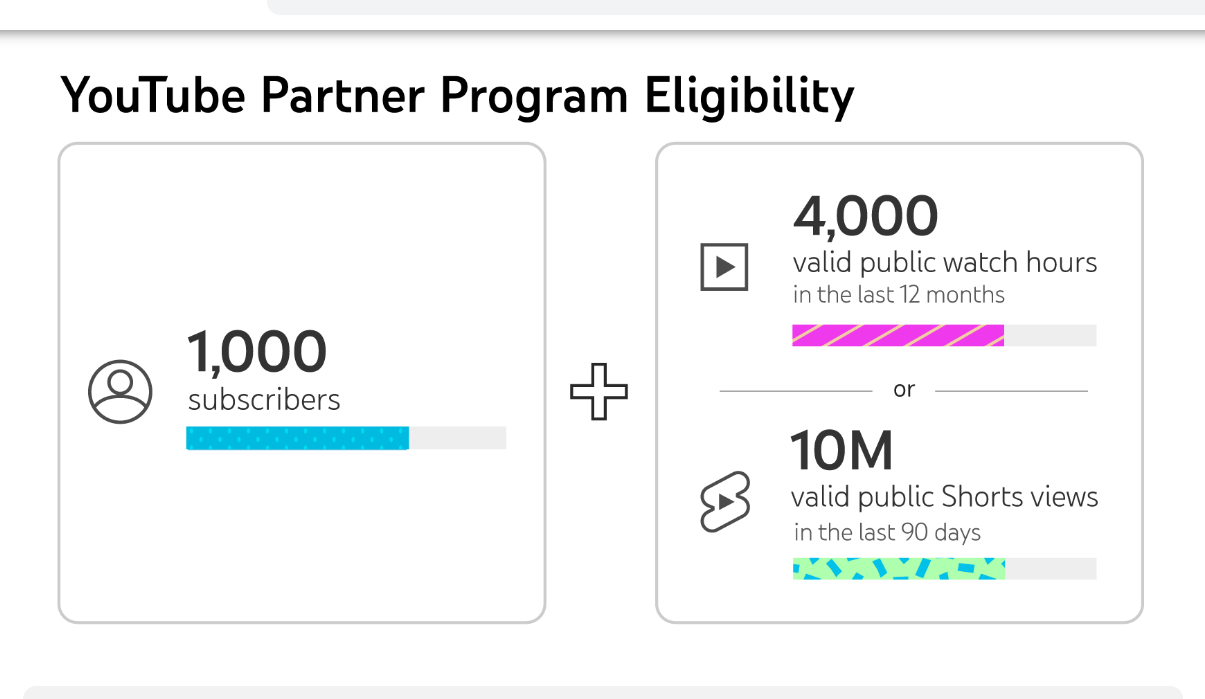
Eligibility Requirements of YPP
YouTube allows you to enroll in its partner program whether you have AI voice YouTube Shorts or long-form videos. The requirement for monetization eligibility is different in each case. In particular:
Or
Note: Public watch hours from Shorts played within the Shorts Feed do not contribute towards the 4,000 public watch hours requirement.
Have a quick glance at some standards to meet before joining:
YouTube sets specific guidelines to ensure that ads displayed on your videos are appropriate for viewers and advertisers. So, make sure you comply with the following:
As mentioned earlier, YouTube’s top priority is high-quality materials that can benefit viewers, creators, and advertisers alike. They don’t discourage your AI-voice content; they just limit those of auto-generation and low quality So, here are what you head to:
AI voices, also known as text-to-speech (TTS) tools, are covering more and more channels. You’ve probably heard them on YouTube, TikTok, or learning platforms.
So, what exactly are AI Voices on YouTube?
Content creators, often those who dislike their own voice or prefer post-production narration, use AI voices to convert written text into a realistic-sounding voice narration. These voices can help streamline their video-creating process. For example, as they film product reviewing videos, they can use AI voices to transform a pre-written script into an engaging sound.
Currently, there are diverse platforms offering this feature, making it versatile for creators to choose a voice style or tone to customize the feel of their videos.
Besides YouTube review videos, this method is widely applicable for content formats that don’t rely heavily on the creator’s personality. They might include videos for how-tos, instructions, information, demos, and more.
This table will show you how you can benefit from using AI voices to monetize on YouTube, as well as some potential drawbacks.
| Pros | Cons |
| – Efficiency and cost-effective
– High accessibility and flexibility – Content expansion opportunity |
– Potential for unnatural speech
– Originality and copyright concerns – Limited customization |
With AI voices for YouTube videos, you don’t need to hire professional voice actors or record your own narration. Specifically, when you need to make some changes to the videos, there’s no need to record voices all over again. So, AI voices are a great way to save you time and money.
You might realize the explosion of text-to-speech (TTS) apps, allowing users to approach AI voices in diverse ways. This facilitation gives you choices among different tones, accents, or languages, potentially expanding the reach of your channel. Besides, AI voices can help you create new types of content with ease and frequency.
While using AI voices is helpful for your YouTube monetization journey, it still has some drawbacks.
Some low-quality AI videos might sound robotic and unnatural, As a result, you might lose your viewers. Besides, if you over rely on AI voices to create your content, you might face the risk of demonetization.
There’s also the potential for copyright strikes when you use AI voices to narrate copyrighted material. Lastly, while TTS gives you diverse options to create voices, there are still limitations in emotion and styles, making it hard to replicate the unique characteristics you desire.
Need some inspiration? Let us show you two successful YouTube channels that use the magic touch of AI voice in their videos. The two channels work in two different fields. Let’s see how we can learn from them!
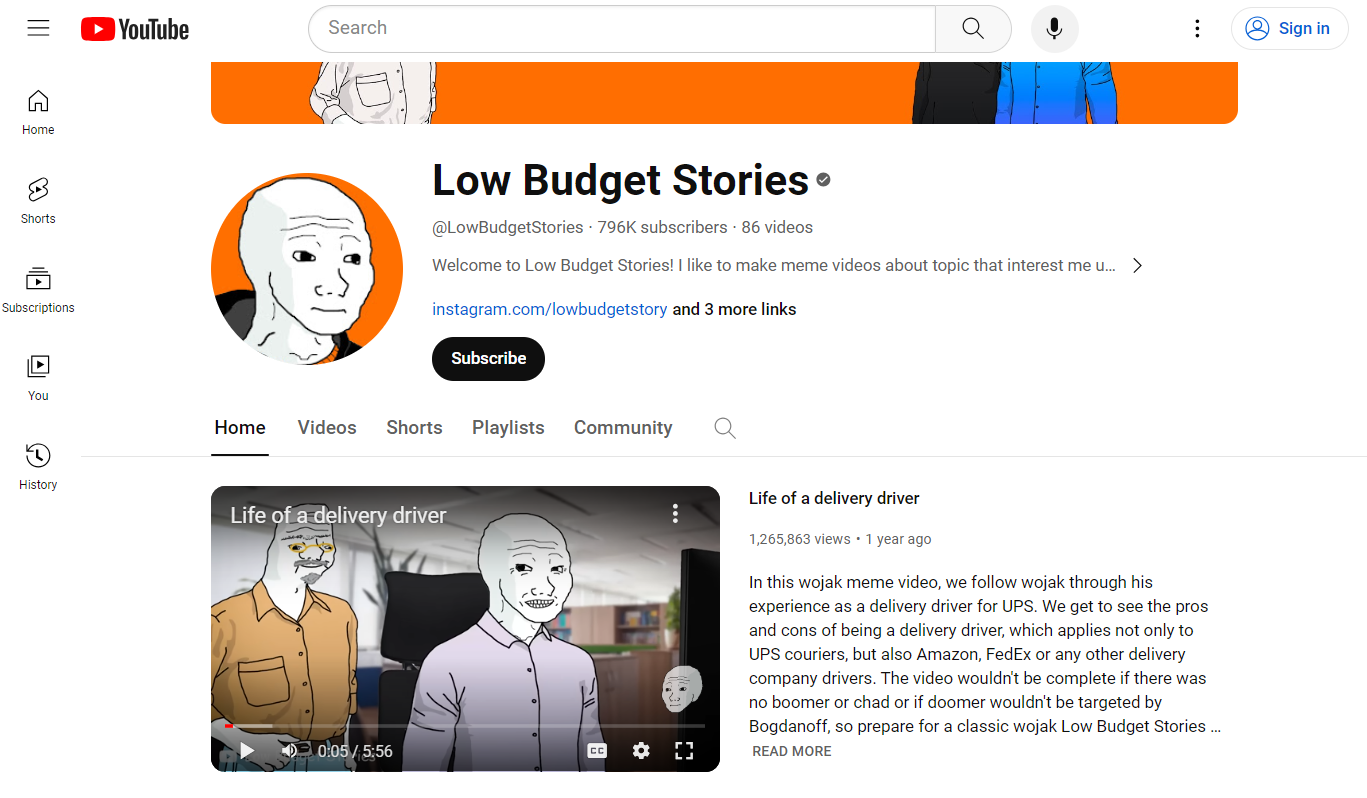
Low Budget Stories – An AI-voice YouTube Channel
This 796k-subscriber YouTube channel is a strong example of successful content creation using AI voice narration. They focus on animated storytelling, often using stock footage and TTS narration.
What makes them successful is a strategic combination of captivating visuals, well-written narratives, and a professional-sounding voice. It makes their content unique and original, giving a high-quality experience to viewers.
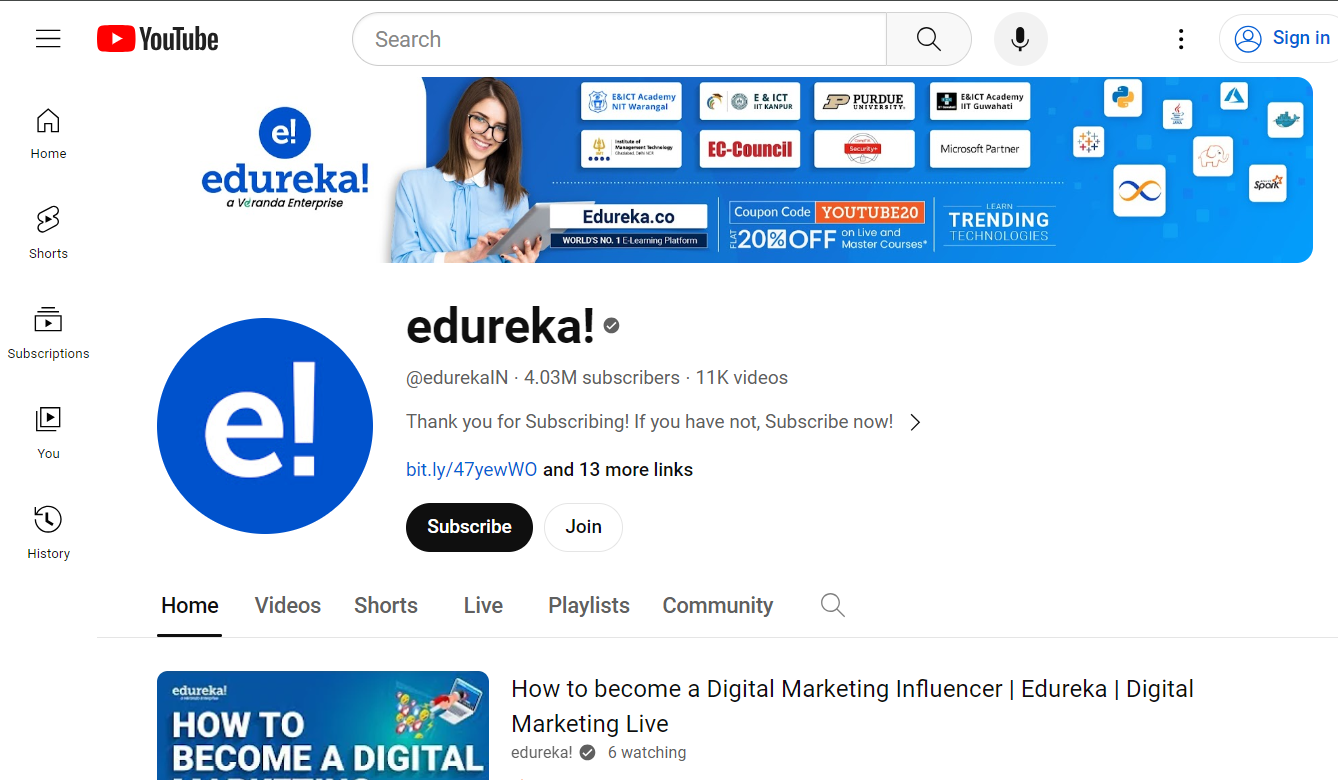
Edureka YouTube Channel
This popular YouTube channel is about tech tutorials and courses. One interesting thing is that they don’t use AI voices in all of their videos. In other words, they strategically use AI voices alongside human narration.
This creative approach not only helps them benefit from AI-narrated versions but also align the YouTube standards of focusing on high quality and originality.
Before wrapping up this guide, we’d love to share some tips on how to start monetizing AI voiceovers on YouTube.
Successful channels often focus on a niche. This is the first and foremost criterion to help them create engaging content and build a dedicated audience.
So, follow them and focus on a specific niche. We recommend choosing a niche that fits your expertise or passion. For instance, if you’re a bookworm, consider creating AI-narrated videos to summarize or review books across different genres.
Maybe You Are Interested: How to Make An AI Voice Model: A step-by-step Guide
YouTube creators primarily earn from AdSense monetization. To qualify for this, you need to join the YouTube Partner Program (We’ve already shared eligibility requirements in a section above).
Once approved, you can link your YouTube channels with your Google AdSense account. Here, YouTube starts displaying ads on your eligible videos.
This stage involves expanding your channel’s reach. Here are some helpful tools to help you increase views and subscribers:
Using appropriate keywords to describe your videos is key to driving traffic to your channels.
First, think of using the YouTube Autocomplete feature – it suggests keywords as you type in the search bar. This is a quick and primitive way to explore relevant keywords in your niche that viewers are actively looking for.
For instance, when you type “morning exercise”, YouTube suggests lots of relevant searches like “morning exercises for women at home” or “morning exercise to lose weight”. incorporating these suggested keywords into your video titles, tags, and descriptions helps you optimize your AI voiceover content for better search visibility.
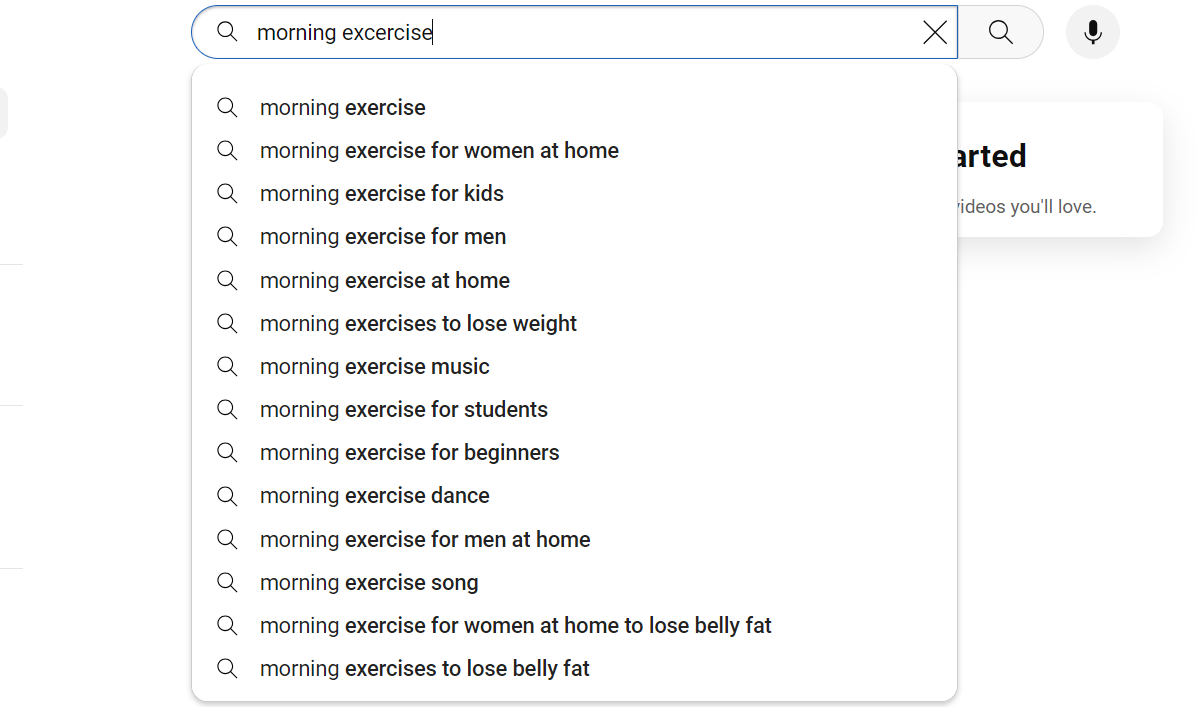
An Example of YouTube Autocomplete Feature
Besides this free YouTube Autocomplete tool, consider some helpful alternatives such as Google Keyword Planner, Google Trends, Ahrefs, etc.
Scheduling tools are crucial for maintaining consistency when using AI voiceovers on YouTube. There is a wide variety of tools that help you manage the uploading process. Look for free tools if you’re on a tight budget.
This free built-in tool helps you track everything related, from viewer demographics to traffic sources to engagement metrics. You can use the data provided to understand how your channel is performing and plan optimization strategies when needed.
So, the answer to “Does YouTube monetize AI voice?” is a resounding yes.
Creators can monetize AI voiceover videos on YouTube. There are no clear restrictions that YouTube employs on using AI voices. But remember, while they offer you this exciting opportunity, focus on creating high-quality content that adheres to YouTube’s principles to ensure long-term success
Do you have any subjects that you would like to discuss with us? Leave a comment below or contact Techdictionary directly. Also, stay tuned to our next articles in the AI field!

